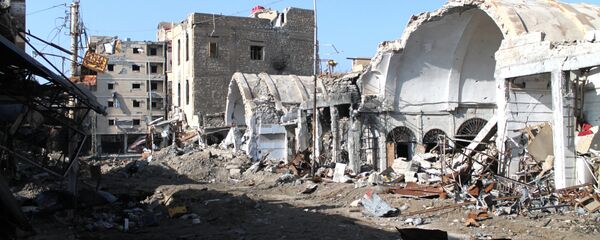Since February, Russia and the United States have worked out several renditions of an agreement on a settlement in Syria. All of them were aimed to stop violence and decrease the number of civilian casualties in the conflict.
Despite the fact that each new document was preceded by long talks between Russian and American top diplomats, none of the agreements have been completely fulfilled.
How the Process Began
The first joint statement by Moscow and Washington on a ceasefire in Syria came on February 22, 2016. At the time, Russia and the United States came to an agreement to establish a ceasefire regime as well as to share intelligence on areas and positions controlled by Daesh and al-Nusra Front.
According to available data, Russia and the Syrian government provided their US partners with information on over 40 moderate opposition groups and terrorists’ positions.
In addition, the Russian Aerospace Forces and the Syrian Air Force continued airstrikes against the terrorists, carrying out some 150 airstrikes a day. Over 500 residential areas were liberated.
Finally, Moscow and Damascus took steps to involve over 65 opposition groups in developing the new Syrian constitution.
At the same time, efforts by Washington and its coalition allies were less intense. In particular, Washington managed to introduce the ceasefire regime, but only for part of moderate groups. The US could not compel moderates to abandon demands for Syrian President Bashar Assad’s resignation.
As for sharing information, Washington was reserved, providing no specific details on terrorists’ positions. The international coalition also did not intensify combat actions against extremists.
Data shows that this year the number of attacks by al-Nusra Front militants has nearly doubled against the previous year. There has been no separation between opposition fighters and terrorists, which resulted in a stalemate for a political transition in Syria.
September Efforts
The latest package of document prepared by Russian Foreign Minister Sergei Lavrov and his US counterpart John Kerry was aimed to resume the once-failed peaceful process in Syria.
In particular, the agreement prescribed establishing a humanitarian corridor in Aleppo and coordinated withdrawal of government and opposition forces from the Castello Road. The parties also agreed to establish a Joint Implementation Center (JIC) for coordinated attacks against al-Nusra Front and Daesh.
In addition, Russia sent its specialists to work with with the US, but the American side finally rejected to cooperate.
Meanwhile, the coalition failed to come to an agreement with the moderate opposition. Earlier, however, coalition representatives said they had leverage on the opposition groups.
The US did not launch airstrikes against al-Nusra Front and failed to separate moderates from the terrorists.
At the same time, Washington repeatedly accused Moscow of violations of its diplomatic obligations and attempts to gain a military victory. The US State Department said that Washington could close bilateral communication channels with Russia on Syria.
Aftermath of the Collapsed Ceasefire
Currently, al-Nusra Front militants are still active in Syria. They are often mixed with moderate opposition groups. The terrorists used the ceasefire to regroup and reinforce.
Washington’s ambivalence in Syria resulted in a decrease of Russia’s counterterrorism efforts in the country.
Moscow has repeatedly voiced concerns that Washington wants to help terrorists to further use them to topple Assad.
US loyalty towards the opposition also resulted in the fact that the moderates took a more hardline stance towards the talks on Syrian settlement.






